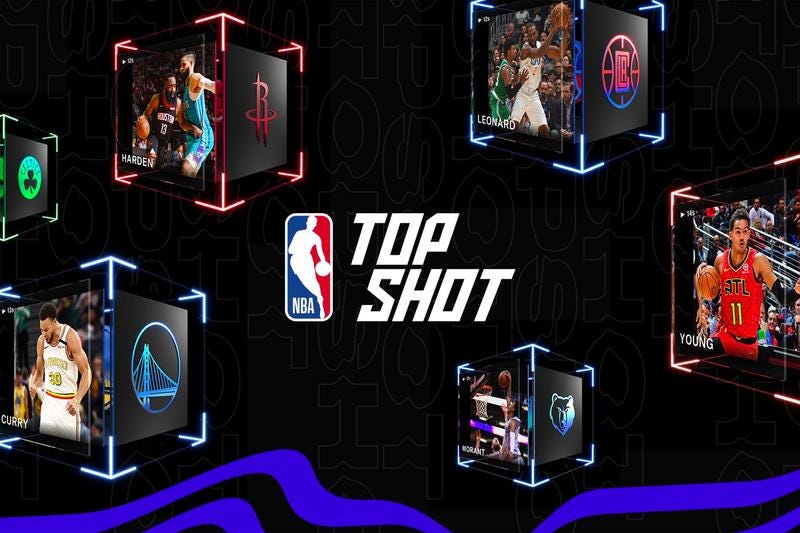Non-fungible tokens, or NFTs for the acronym lovers, are the latest fad to take over the internet. Are they the product of a pandemic-induced cabin fever? Or are they the next big investment (i.e. the new Tesla or GameStop? 🤔). This week, Unfold Weekly is taking a deeper look at NFTs, both in the present and future context.
(N)o (F)***ing (T)houghts
If only they were called non-fungible coins (NFC) — “Clue” would be a much better replacement in this title instead of “Thoughts.” Anyway, NFTs are a cryptographic token which represents a tangible, unique item…without being tangible in the traditional sense. They are essentially digital assets that represent physical or digital items, from trading cards, to art, and even virtual real estate! I imagine the time I spend vacuuming would greatly diminish in a virtual condo 🥺. To put it simply, think of a mix of Bitcoin and a trading card…the difference is, NFTs are NOT interchangeable. This means that while a bitcoin is a bitcoin, like any other bitcoin, your Michael Jordan rookie card is not the same as your non-holographic Caterpie or CryptoKitty 🐱. Each NFT is distinct and verifiable — good luck trying to counterfeit an easily traceable digital asset. The majority of NFTs were built using Ethereum…but we will let Coindesk get into the technical nitty-gritty.
So…What’s the Point?!
Now that you get the idea (kinda, partially, maybe?… not really), why would anyone want an NFT and what do you do with one? The answer can vary drastically between a user, similar to collecting trading cards or pieces of art. Pokemon, for instance, has experienced a significant boom during the pandemic, partially due to the need for nostalgia to escape the struggles of Covid-life. The same can be said for NFTs — some may collect art, videos, or cards for nostalgic purposes and to expand a collection. Others (most) are looking for the next big investment and get rich quick schemes. Similar to our deep dive into social-media driven stock increases, investors are seeking alternative ways to grow wealth. Essentially, buyers are seeking to purchase an NFT at $X and looking to sell the same token for $5X…or even $5000X! 📈
Besides buyers, many sellers are utilizing digital assets in new ways, often avoiding the often archaic methods used in the past. For instance, artists are able to forgo the traditional auction house and gallery to reach potential buyers. Not only can artists keep a larger portion of profits, they can reach a significantly greater, global market. However, finding the right hook to hang your new $6.6M digital piece of art may be challenging🔨.
Give Me Some Examples
One of the recent driving forces in NFTs is NBA Top Shot🏀. A prime example of the intersection of trading cards and blockchain, NBA Top Shot has redefined the sports card market — buyer are able to purchase “packs” of “moments” that consist of virtual cards, often short videos of in-game plays. So why pay money for a video you can watch on YouTube? Just like printing out a picture of a LeBron James rookie card isn’t the same as owning the actual rookie card, neither is the YouTube video. Each moment has a specific serial number, ranging from Common (5,000+ instances) to extremely rare (<25 instances). Owning one of 49 available moments of LeBron James’ “Cosmic” Dunk could net you over $200k.
Still confused as to why anyone would possibly spend thousands of dollars for a 5 second video? Our favorite push-up prince 💪, Johnathan Bales, lets us know why he spent $35k on a single moment.
Back to Today’s Sub Header…Is it Fab or Another Fad?
It may not be the answer you’re seeking, but only time will tell⌛. The estimated total value of crypto art has reached 9 figures (that’s over $100M!), so there is clearly a market. However, simply comparing Bitcoin to NFTs is missing the mark. Again, the price of Bitcoin is determined by a vastly larger market, from financial institutions to your neighbor, Larry. The digital asset community, however, is far more niche and narrow. Can enough liquidity exist to make NFTs viable in the future? Or will this simply burst💥, much like the dot-com bubble in the late 1990s? To get greater adoption, the scalability and ease of operations will need to greatly exceed what is capable of Ethereum (Or Polkadot, Cosmos, etc.). In the future, perhaps we will no longer have trading card collections collecting dust in our basements…actually, we may only have virtual basements collecting virtual dust at that point.
More FUN(gible)
Obviously there is much more to cover, and we are simply a quick-read weekly newsletter. See below for some more information you may find interesting…or even more confusing.
Don’t worry there’s a loooong rabbit hole to go down if you get interested. One of us just converted USD 💸 into ~4Ξ so he can invest (ahem gamble) in some NFTs.
If you also regret your decision to pay mucho dinero for an “education” instead of getting really good at photoshop, please LET US KNOW! 🥺





